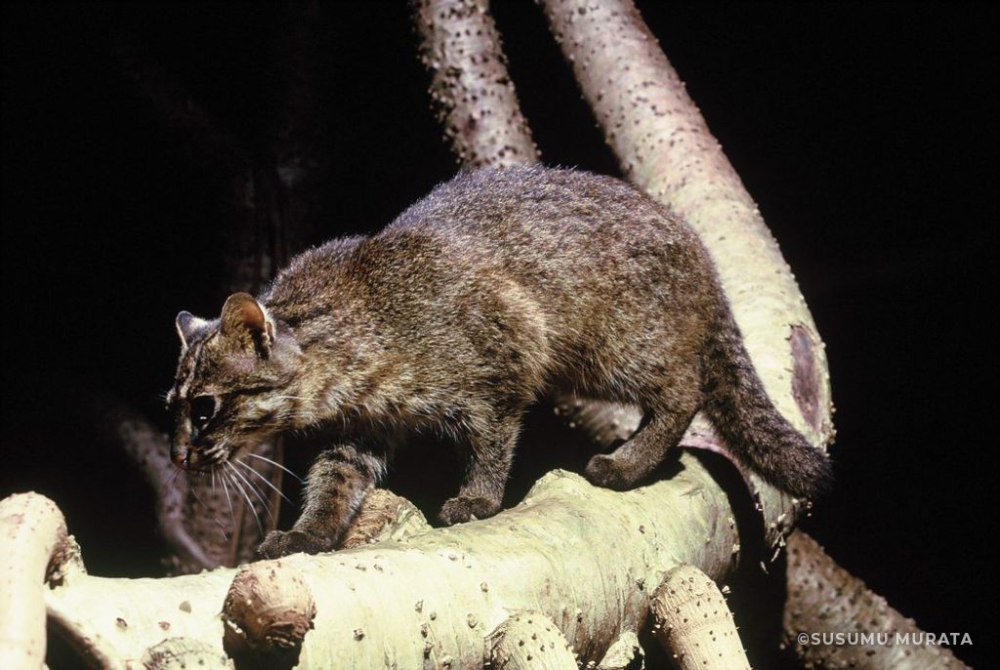The Iriomote cat, scientifically known as *Prionailurus bengalensis iriomotensis*, is a subspecies of the leopard cat (*Prionailurus bengalensis*). This rare and enigmatic feline is endemic to Iriomote Island, a small, remote island in the Yaeyama archipelago of Okinawa Prefecture, Japan. Discovered in 1967, the Iriomote cat has since captivated the attention of scientists and conservationists due to its unique adaptations, elusive nature, and critical conservation status. This article explores the Iriomote cat’s habitat, physical characteristics, behavior, diet, conservation challenges, and the efforts being made to ensure its survival.
Habitat and Distribution
The Iriomote cat lives exclusively on Iriomote Island, which spans approximately 289 square kilometers. This isolation has led to the development of distinctive characteristics that differentiate the Iriomote cat from its mainland relatives. The island’s dense subtropical forests, mangroves, and coastal regions provide a diverse range of habitats. That support the cat’s varied diet and lifestyle.
Iriomote Island’s environment is a mix of mountainous regions, rivers, and coastal areas, creating a mosaic of habitats. The Iriomote cat has adapted to this diverse landscape, displaying behaviors and physical traits that enable it to thrive in such a setting. For instance, it is an adept swimmer, capable of crossing rivers and streams, which is essential for navigating the island’s terrain.
Physical Characteristics
The Iriomote cat is relatively small, with an average body length of 50-60 centimeters and a tail length of around 20-25 centimeters. It typically weighs between 3 and 7 kilograms. Its fur is a dark brown color with distinct, irregular dark spots and stripes, providing effective camouflage in its forested habitat. The cat’s eyes are large and rounded, adapted for nocturnal vision.
Unique Traits
One of the most distinctive features of the Iriomote cat is its short, stocky limbs and slightly webbed feet, which aid in swimming and navigating the island’s varied terrain. Unlike many other felines, the Iriomote cat also has a more omnivorous diet. The Iriomote cat is primarily nocturnal and solitary. They are maintaining territories that they mark with scent markings and scratches on trees. These territories can overlap slightly, but the cats generally avoid direct contact with each other except during the mating season.
Diet and Hunting
The Iriomote cat’s diet is highly varied and includes small mammals, birds, reptiles, amphibians, insects, and even some plant material. Its hunting technique is adaptable, with the cat capable of stalking and ambushing prey in dense vegetation, swimming after aquatic prey, and foraging for insects and fruits. This dietary flexibility is crucial for survival in the island’s fluctuating environment.
Reproduction
Breeding occurs mainly between February and April. Females give birth to one to three kittens after a gestation period of about two months. The kittens are weaned at around two months old but remain with their mother for several more months. That way they learn to hunt and survive independently.
Conservation Status and Challenges
The Iriomote cat is critically endangered, with an estimated population of fewer than 100 individuals. The primary threats to its survival include habitat destruction, road accidents, and competition with invasive species. Human development on Iriomote Island, including road construction and tourism, has fragmented the cat’s habitat. It increased the risk of vehicle collisions. Additionally, introduced species such as dogs and mongooses pose direct threats through predation and competition for food.
Conservation Efforts
Several measures exist to protect the Iriomote cat. The Japanese government designated the cat as a National Natural Treasure in 1977 and established the Iriomote-Ishigaki National Park to protect its habitat. Road signs and speed limits have been put in place to reduce the risk of road accidents.
Research and Monitoring
Continuous research and monitoring are crucial for the conservation of the Iriomote cat. Scientists use camera traps, GPS collars to gather data on the cat’s population size and habitat use. Public awareness campaigns and educational programs aim to involve local communities and tourists. They participate in conservation efforts, highlighting the importance of preserving this unique species.
Conclusion
The Iriomote cat represents a remarkable example of adaptation and survival in a highly specialized and isolated environment. However, its existence is precarious, and immediate, sustained conservation efforts are essential to prevent its extinction. By understanding and addressing the threats it faces, and by fostering a deeper appreciation for this unique feline, there is hope that future generations will continue to witness the elusive beauty of the Iriomote cat on its island home.










